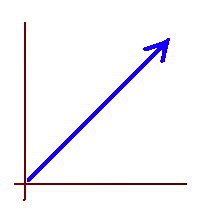Transferring control of the tutoring session to the student
Along the lines of my previous post, about how I help students in our math tutoring sessions, here is another ingredient of my tutoring method: I transfer as much control as possible to the student, over the tutoring session. The keywords here are “as much as possible,” meaning, making sure the students still learn all they need to learn. I do this by asking questions like: “What do we have today?” “Do you have any specific questions?” “What topics would you like us to review?” “What topics is the next midterm going to cover?” “Would you like to see a shortcut for doing that faster?” “Does this explanation make sense?” “What problem do you want to do next?” and so on and so forth. This is a major difference between tutoring one-on-one, a single student at a time, versus teaching a large class. A teacher in the classroom has to cover a large amount of material under a tight schedule; while the tutor can focus exclusively on the specific issues the student is having difficulties with. In a large class every student has different questions, and different difficulties, so the teacher cannot allow the lesson to wander all over the place by following the interests, questions, and difficulties of every single student in the class. That is practically impossible in traditional education. However, in a one-on-one tutoring session the tutor can answer most of the student’s questions without getting sidetracked. Actually, answering all specific questions each particular student may have, is not only possible but indeed necessary for the tutoring session to be successful. That is the very essence of private tutoring, as opposed to teaching a class of many students. Very early on in my tutoring business I discovered the educational benefits of developing the tutoring session along the needs of the individual personality of each student. Students learn better when they are learning at their own pace; when they are encouraged to ask all questions they have about a particular topic; when the instructor checks with them if the explanations make sense to them; and when the instructor lets them choose the order in which to work out the problems. Whenever I notice a student is showing signs of being bored, uninterested, impatient, or irritated, I try to find a way to give the student more control over the tutoring session. The ideal is to have the tutoring session resemble a casual conversation as much as possible. This cannot be done in the same way with every student. Each student is different. However, there are two very broad categories in relation to this topic of controlling the flow of the tutoring session. On one hand we have the working adults who are preparing to take a standardized test, and who pay for the tutoring sessions out of their own pocket. On the other hand we have the children, and teenagers, whose parents made the decision for them to take tutoring sessions. In the latter case the parents are paying for the tutoring sessions, not the students themselves. There are exceptions to every rule but, in general, I find it easier transferring control of the tutoring session to the working adults who are paying for themselves, than to the children or teenagers whose parents are paying for them. Working adults who pay out of their own pocket are already motivated enough to learn. They made the decision to hire a tutor; and they took the trouble of finding one. They usually have a better idea of why they are taking the tutoring, and what they want from it. On the other hand, the children who come to the tutoring because their parents made that decision for them, they are in a different situation. Often they are still struggling to get over the fact that they have to learn math even when they do not like it. Letting children start talking about whatever they have in mind leads much more quickly outside of math than it does with working adults. It may not show when viewing the process from the outside but actually, transferring more control of the tutoring session to the student, takes a lot more attention, and effort from the tutor than it would take otherwise but it is much more effective as far as the student achieving educational results.
Golden iteration
-
The expression converges to the golden ratio φ. Another way to say this is
that the sequence defined by x0 = 1 and for n > 0 converges to φ. This post
wi...
1 day ago





No comments:
Post a Comment